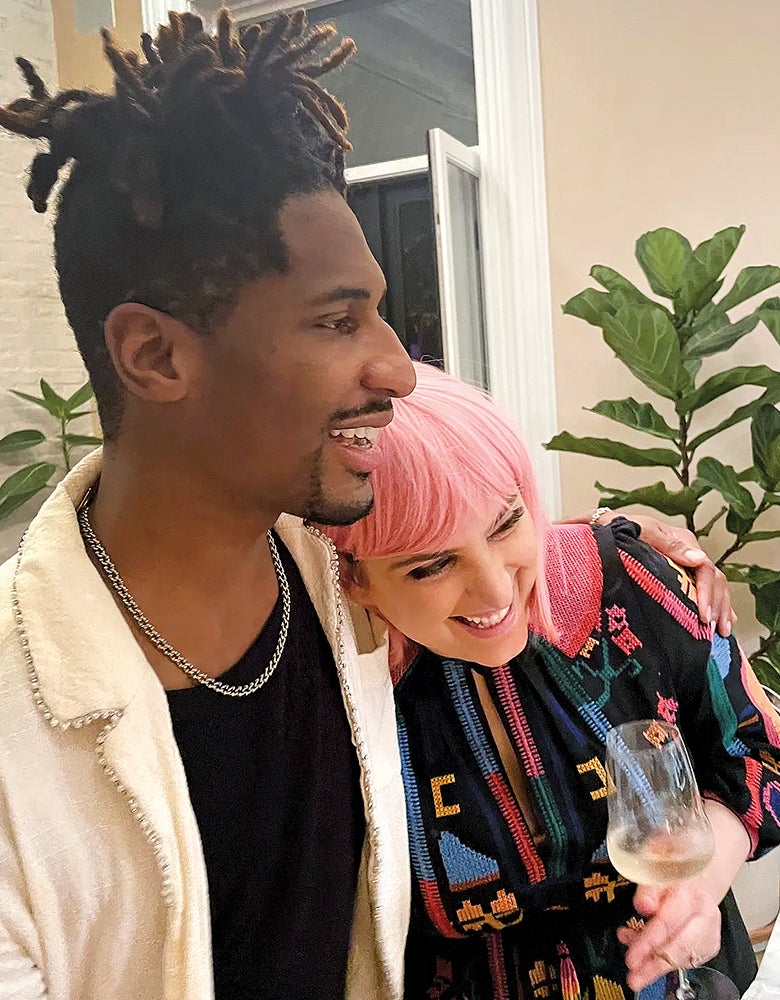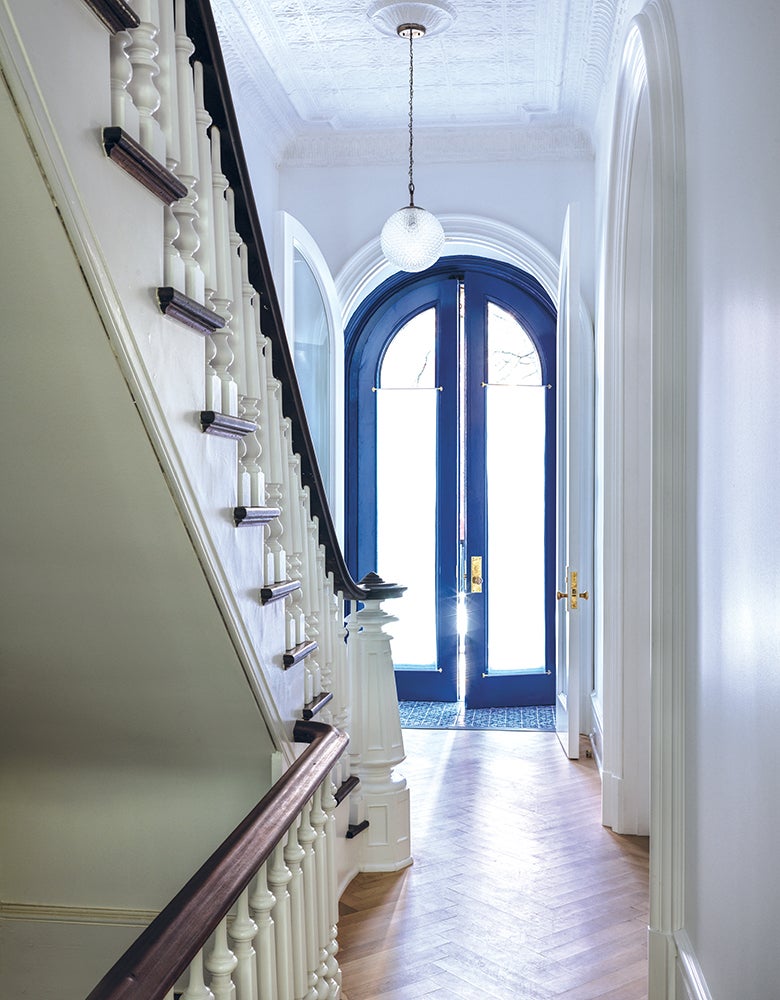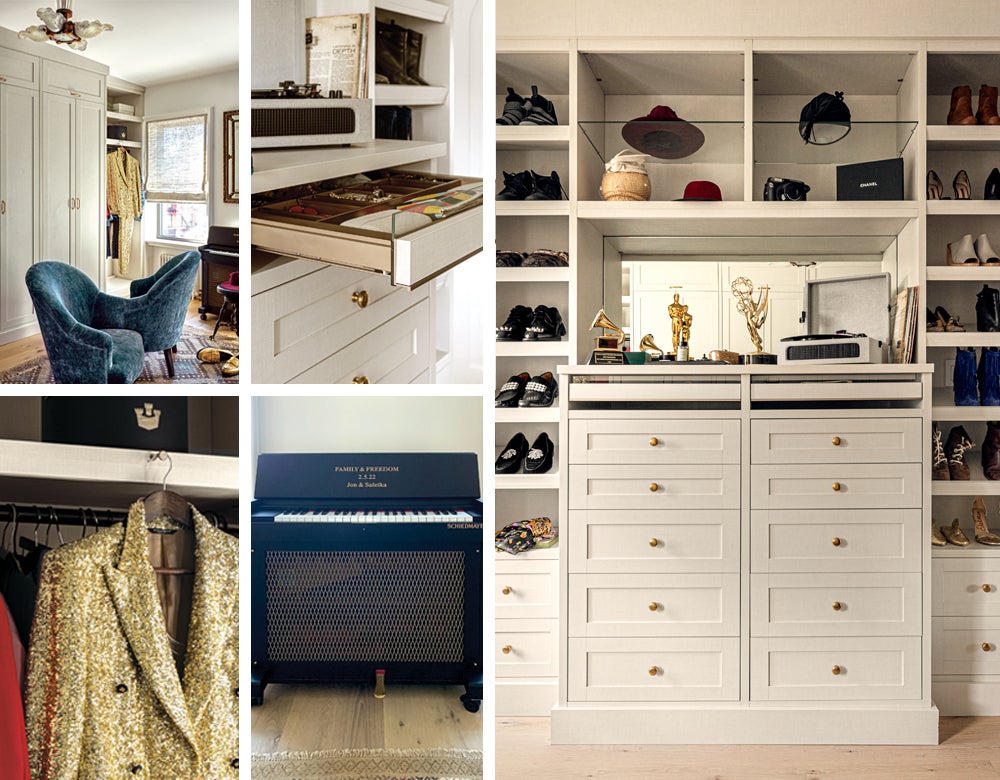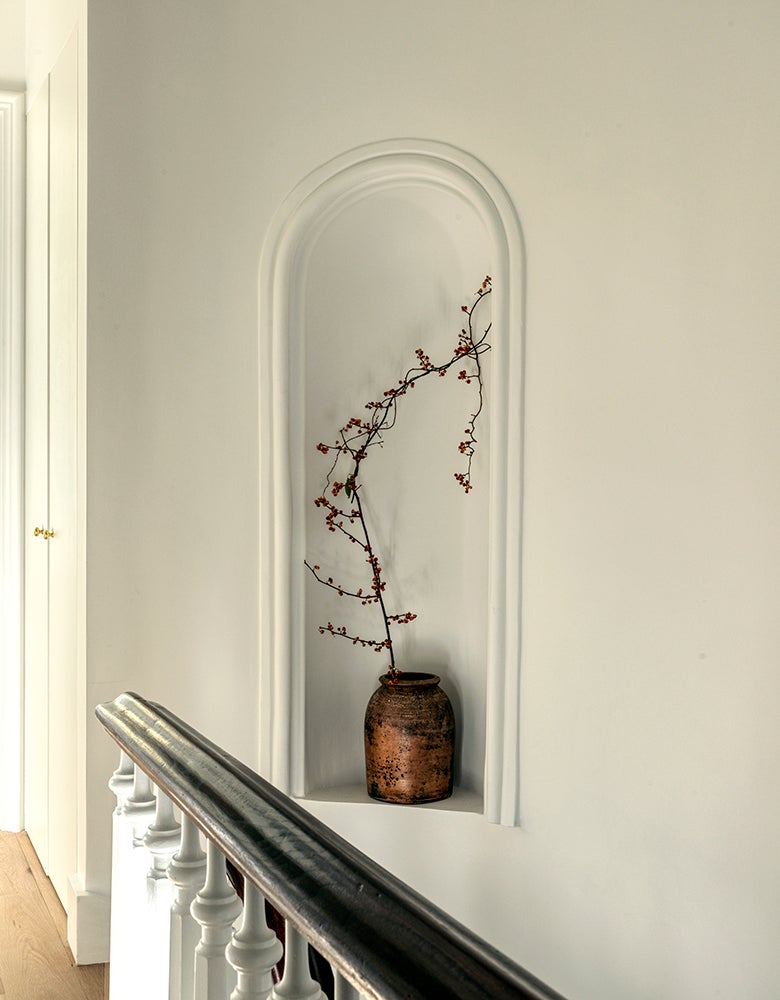THE CALIFORNIA CLOSETS MAGAZINE
It was Suleika who found the 19th-century Brooklyn brownstone, clearly showing its age, and imagined its possibilities. “I walked into the house and I didn’t like it,” says Jon with a laugh. “I could not see the vision. But I trust Suleika. Suleika is the whole reason for everything good in life.”
What Suleika saw were period elements that echoed their backgrounds. “I saw the arches, which reminded me of Tunisia, where my dad is from,” she says (her father is a professor; her Swiss-born mother an artist). “And the high tin ceilings, and the moldings, reminded me of houses I’d seen in the Garden District in New Orleans,” the city where her husband grew up and where the extended Batiste family is music royalty.

Transforming the house into Tunisiana took three years of extensive renovations, with architect Ravi Raj, and careful choices, “from the tiles that were made by a friend of mine in Tunisia that grace the backsplash of our kitchen to the art to the presence of instruments everywhere,” Suleika says. “It really feels like a holistic embodiment of who we are.”

The vivid blue of the doors at the entry was inspired by doorways Suleika saw in Tunisia. Built in 1899, the house “has given us the starting point of our family legacy together,” says Jon. “We sowed very important life seeds into it from the beginning.”
“We both grew up in places that were their own unique blend at the nexus of French, African, and other cultural influences, cultural origins,” says Jon. “Those influences come together in our taste, in our home.”
They also wanted “the blend of old and new,” adds his wife. “I think we have an appreciation of objects that tell stories. We wanted to fill our home with those, but we also wanted a space that felt fresh and young and reflective of the phase that we’re at in our lives.”
This phase has taken on an unexpectedly somber cast as well. “What we didn’t know when we embarked on this project is that we’d be moving into the house when I was recovering from a bone marrow transplant,” says Suleika. In November 2021, the leukemia diagnosed in her early twenties returned. She had chronicled that odyssey—and the bone-marrow transplant she’d undergone—in her best-selling book, Between Two Kingdoms.
With a decade of remission behind her, she thought she’d been cured. “When I got the biopsy results,” she wrote in The Isolation Journals, the popular blog she began three years ago, “it felt like a sinkhole opened up and swallowed everything.” She started chemotherapy the day Jon received a record 11 Grammy nominations. “This is so much of life,” she has said of that moment, “holding the really beautiful things and the deeply cruel, profoundly hard things in the same palm.”
Although Suleika has been forthright with her readers about the grueling nature of recent treatments and complications, she has insisted on finding humor, optimism, and a measure of serenity through her ordeal. “Getting past the fear and stepping toward hope is what I have to do,” she writes. “I want to live a forward-looking life, anchoring myself in the things that are true and good.” She writes often about gratitude—for her readers, her friends, her parents, her brother, and, most of all, for “my beloved,” her husband, “who’s been at my bedside around the clock.”
Enduring “semi-house arrest” was, in fact, “a great joy and blessing,” she says. “It feels like a wonderful way to embark on a first year of marriage and on a first year of owning a home. We’ve gotten to make so many memories here already, from holiday dinners to birthday jams and musical gatherings.” And a wedding: Although they hadn’t moved in yet, the couple—who first met in music camp as teenagers—were married in what Suleika has called “a tiny beautiful little ceremony” in front of close family in February 2022, the day before her bone marrow transplant. (The choice of date was impulsive—so much so that they used bread ties for rings—but they had talked about marriage the first week they started dating, eight years ago.)
The house is also a place for focusing, for work. Finding the “mental energy” to write has been difficult for Suleika during her illness, and she has started to paint “these weird little watercolors” because it “seemed like this thing I could do without any expectation of being any good at it.”
Jon wore the sparkling gold jacket (with matching pants) to premiere a new work at Carnegie Hall in 2022; the couple's John Derian by Cisco “tête-à-tête” chair; sliding trays are for evening bags and other small items; the celesta, or bell piano, was made by a small family-owned company in Germany. RIGHT: The shared top of the side-by-side dressers holds one of Jon’s five Grammys, the Academy Award he shared with composers Trent Reznor and Atticus Ross for their original score to the Disney-Pixar film Soul, and Suleika’s Emmy, won for the video version of her New York Times column, “Life, Interrupted.”


A niche in the stairwell holds an early American ceramic vessel, found in an antiques shop in upstate New York. Styled by Hallie Goodman.
“Originally Jon wanted a piano in every room, which it turned out wasn’t feasible,” says Suleika. But he managed to get two grand pianos and many keyboards into the house so far, and even a wee piano of sorts—a Schiedmayer celesta, or bell piano—into their dressing room. A plaque on the front of it reads “Family & Freedom,” with their wedding date below. “Every year we like to pick a theme for our year,” Suleika explains, “and this year’s theme was family and freedom. Family because we were individuated in creating our own family unit after getting married, and freedom because I think we’re always seeking all kinds of freedom—creative freedom, personal freedom.”
“The celesta creates this magical sound that takes you back to childhood or takes you to some wonderful fairyland,” says Jon. (That’s the celesta playing in the theme song to Mister Rogers’ Neighborhood, he points out. “They picked the right instrument to capture that wonderful emotion.“) “I like playing Suleika to sleep when she’s stressed or whatever,” he says. His lullabies are definitely “a perk of the relationship,” says Suleika.
The dressing room is a special, intimate room for other reasons as well. “I like picking out clothes for Suleika,” says Jon, known for his imaginative, colorful wardrobe.
“And I have to fix and style his hair,” says Suleika. “So for us getting dressed is really a collaborative act.”
“Yeah,” says Jon. “Col-lab-or-a-tion!”
Just like the creation of Tunisiana.